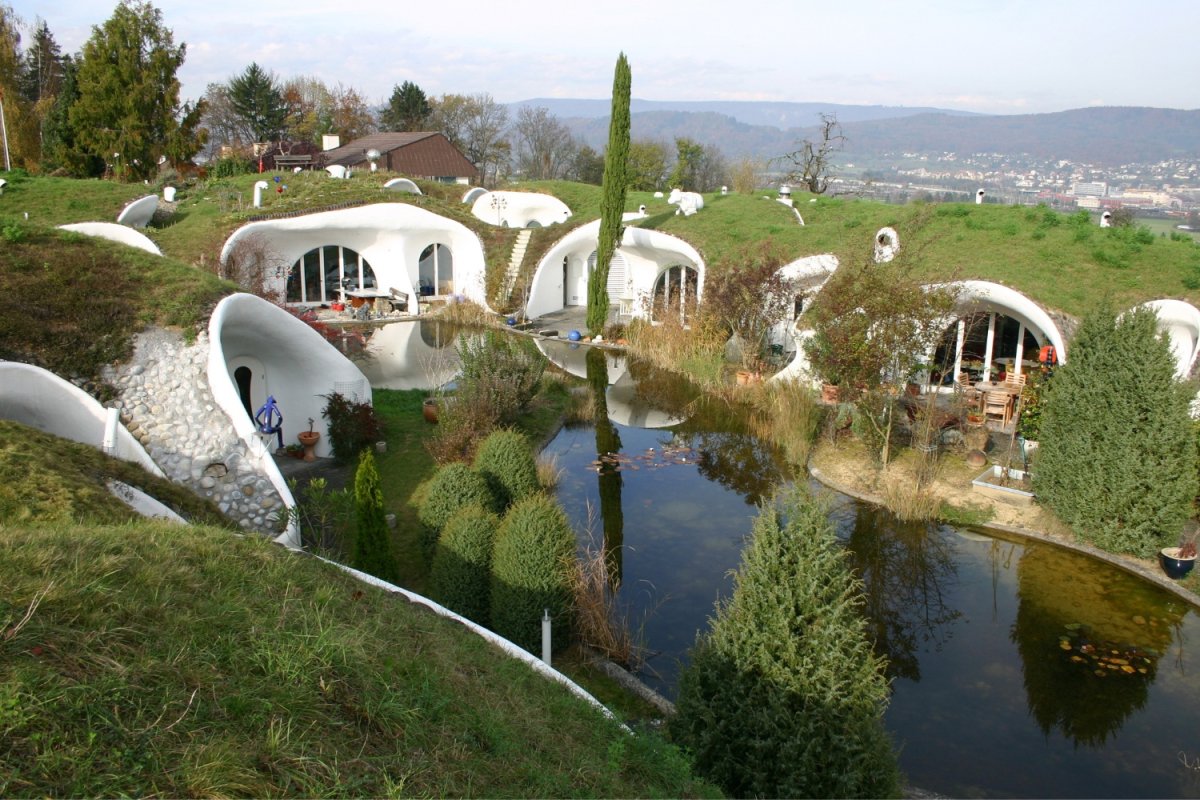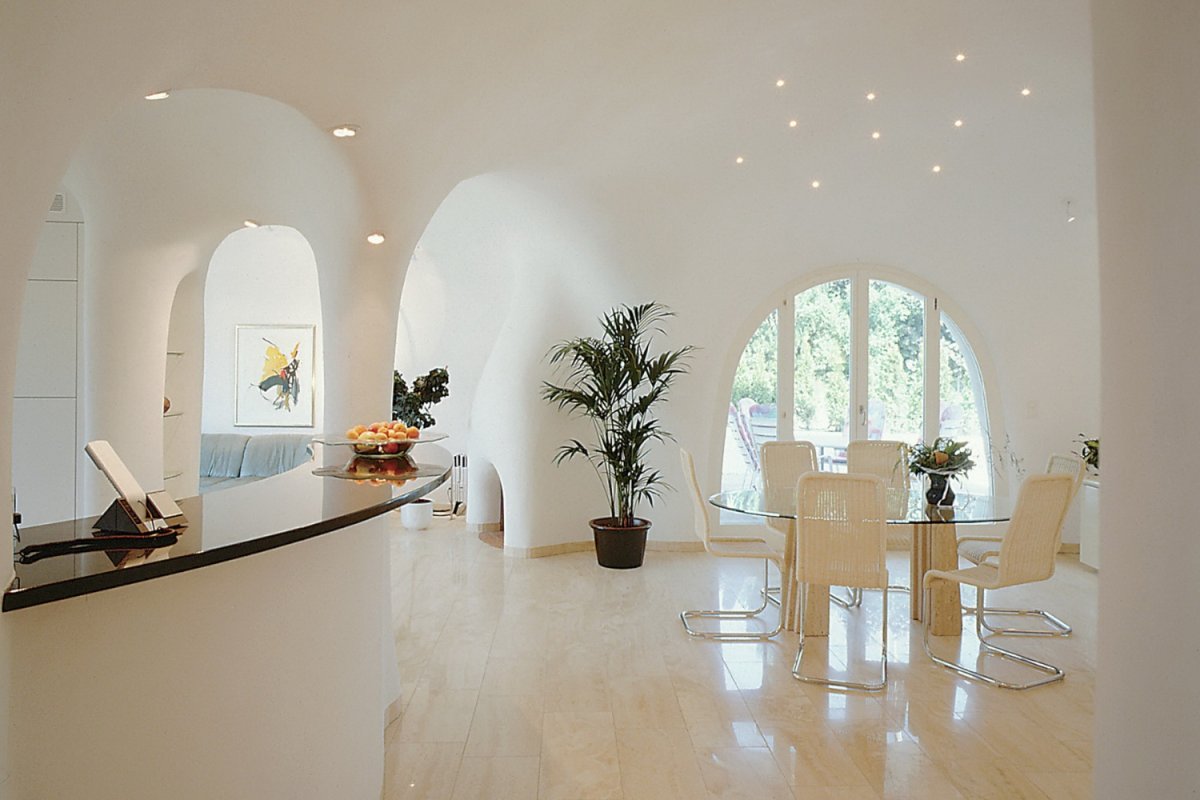In the early 80s, I saw the Earth House Estate Lättenstrasse on TV for the first time. I'd always had a passion for architecture so I was fascinated by the whole concept: round homes, almost like igloos, sprayed with concrete and covered with earth and grass.
I was a student at the time, living in Zurich, Switzerland, and I thought these homes were completely out of my reach. Little did I know, I would move into one in 1995.
As a student, I lived in the roof of a house, so all the walls were slanted, and it was quite primitive. There was a one-pan hob, and there wasn't even a shower. But it had a lot of history, as it used to be a servant's quarters. It was a special apartment and, as a student, I found it fantastic and cheap.
I later got married and we lived there for two years. Then we had our son and decided it was time to move on. We moved to another place in Zurich that had large rooms, but every room was like a shoebox. It was not nice architecture—it was modern but boring.
I have my own photography agency, which might be why I think it's important to live somewhere that's pleasing to the eye.

Then in 1994, I saw a TV ad about the Earth Homes going on sale. It was pure chance. My wife and I visited and bought a house, which was still being built, in 1995.
It was not only the house that appealed to us, but also the location—it was close to Zurich but also five minutes from a big forest. It had a little garden, too. We had a 2-year-old son and my wife was pregnant. We had always lived in the middle of a city, so we liked that it was so green.
The structure of the Earth House Estate
Where we live, there are nine houses in a U-shape, with a pond in the middle. Each house is like an igloo. It's a round metal structure, where you have the windows, the doors and everything, with concrete sprayed on top.
You have the ground floor, where you have the kitchen, the living room, the bathroom, the toilet, and two bedrooms. Each room is round. They are like small igloos put together.

In the basement, which is below ground level, the rooms are not round. The ceiling and floor are horizontal but the walls are not at a 90 degree angle. They're more like 60 degrees, which I think was the architect's way of getting rid of these strict right angles.
You wouldn't expect these to be houses from the outside. They look like a couple of hills, as they are covered in grass. It's very organic and green and certainly not boring. It has some ecological advantages, too. A normal house always takes something away from nature; the soil and grass over our homes almost give something back.
Concerns with the underground home
In the beginning, the estate attracted busloads of visitors. People would visit us and say, "It's nice but I could never live in a form like this." They were put off because they wouldn't be able to hang their pictures, due to the round walls. But for us, this was not a problem as we didn't have any pictures or furniture when we moved in.
Sometimes we hear people talking as they walk past our garden on the road. They say, "It must be very dark inside." People usually think the ground floor looks like a World War II hangar from the outside, so they think it's wet and dark. But the ground floor is not dark at all—it's quite bright. There are windows in the ceiling and walls, which let in light, and two rooms look onto the terrace. There's definitely enough daylight during the day.

In the basement, on the other hand, there's not a lot of light. It has natural light but only on one side of the house, as the light on the other side is blocked by the pond and the garage. You have to use artificial light downstairs. But it's not a living area; it's where we have the washrooms, cellar, storage room, and my daughter's old room—which was big and had windows. It's a bit darker downstairs, but it has never been a big issue.
A home for the future
We had a very hot summer this year, and in Switzerland you don't usually have air conditioning in private homes. But on the Earth House estate, we didn't need it. The homes are well-insulated, so they stay cool in summer and warm in the winter. The temperature was always very agreeable—all you had to do was open the windows early in the morning and close the shutters in the afternoon.
Now that the temperature is changing, I can see chimneys already smoking in the distance. But we never need to put our heating on. So from an energy perspective, it's really fantastic. Our energy bills are probably half, or even less, than most homes in Switzerland. Heating, electricity, TV, internet, and everything else costs the equivalent of $100 a month.
There are eight other homes in our estate, but I think people who live here are quite individualistic. We have some kind of relationship, and there's a party every year, but we have all different interests and lifestyles.
I have lived in an Earth House for 27 years, and I would stay another 27 years. I have no plans of leaving at all; I really like it. There's the pond on one side, and a little bit of garden on the other, and you can leave the doors open and let the dogs go in and out, while you sit on a deckchair. It feels like being on holiday.
Stefan Wittwer was the President of the photo agency Prisma, but he is now retired. He lives on the Earth House Estate Lättenstrasse in Switzerland with his wife.
All views expressed in this article are the author's own.
As told to Newsweek's My Turn section deputy editor, Katie Russell.
Uncommon Knowledge
Newsweek is committed to challenging conventional wisdom and finding connections in the search for common ground.
Newsweek is committed to challenging conventional wisdom and finding connections in the search for common ground.
About the writer
To read how Newsweek uses AI as a newsroom tool, Click here.






